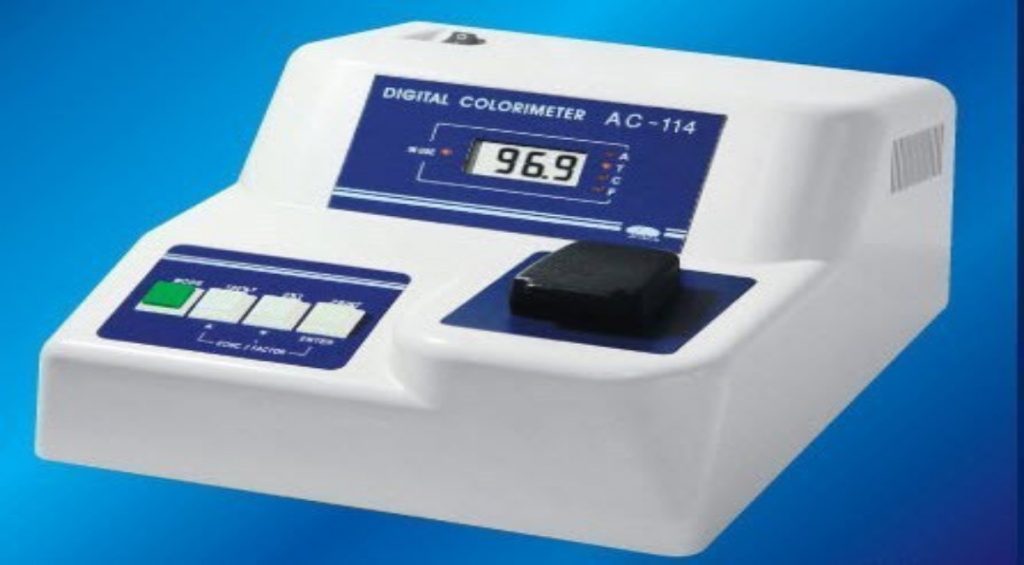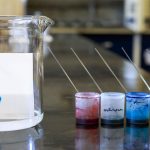Introduction
A colorimeter is a light-sensitive device used for measuring the transmittance and absorbance of light passing through a liquid sample. The device measures the intensity or concentration of the color that develops upon introducing a specific reagent into a solution.
There are two types of colorimeters
color densitometers, which measure the density of primary colors, and color photometers, which measure the color reflection and transmission.
Design of Colorimeter
The three main components of a colorimeter are a light source, a cuvette containing the sample solution and a photocell for detecting the light passed through the solution.
The instrument is also equipped with either colored filters or specific LEDs to generate color. The output from a colorimeter may be displayed by an analog or digital meter in terms of transmittance or absorbance.
In addition, a colorimeter may contain a voltage regulator for protecting the instrument from fluctuations in mains voltage. Some colorimeters are portable and useful for on-site tests, while others are larger, bench-top instruments, which are useful for laboratory testing.
Working Principle
The colorimeter is based on Beer-Lambert’s law, according to which the absorption of light transmitted through the medium is directly proportional to the medium concentration.
In a colorimeter, a beam of light with a specific wavelength is passed through a solution via a series of lenses, which navigate the colored light to the measuring device. This analyzes the color compared to an existing standard. A microprocessor then calculates the absorbance or percent transmittance. If the concentration of the solution is greater, more light will be absorbed, which can be identified by measuring the difference between the amount of light at its origin and that after passing the solution.
To determine the concentration of an unknown sample, several sample solutions of a known concentration are first prepared and tested. The concentrations are then plotted on a graph against absorbance, thereby generating a calibration curve. The results of the unknown sample are compared to that of the known sample on the curve to measure the concentration.
Applications
Colorimeters are widely used to monitor the growth of a bacterial or yeast culture. They provide reliable and highly accurate results when used for the assessment of color in bird plumage. They are used to measure and monitor the color in various foods and beverages, including vegetable products and sugar. Certain colorimeters can measure the colors that are used in copy machines, fax machines and printers.
Besides being used for basic research in chemistry laboratories, colorimeters have many practical applications such as testing water quality by screening chemicals such as chlorine, fluoride, cyanide, dissolved oxygen, iron, molybdenum, zinc and hydrazine. They are also used to determine the concentrations of plant nutrients such as ammonia, nitrate and phosphorus in soil or hemoglobin in blood. Colorimetry is also used in color printing, textile manufacturing and paint manufacturing for precise quality inspection.
Colorimeter vs Spectrophotometer
Like colorimeters, spectrophotometers are used to measure the color absorbing properties of a substance. The key difference between the two is that the spectrophotometer measures the transmittance and reflectance as a function of wavelength, whereas the colorimeter measures the absorbance of specific colors.
Spectrophotometers measure the transmittance and reflectance for all colors of light and show how they vary as the color is changed. Colorimeters operate only in the visible portion of the electromagnetic spectrum whereas spectrophotometers work with infrared as well as visible light. Spectrophotometers will produce valid results for Beer’s law and can effectively be used as colorimeters but are much higher in cost and complexity.



Comments are closed